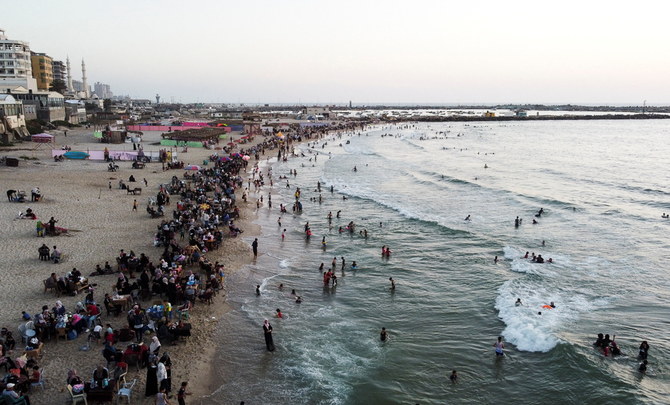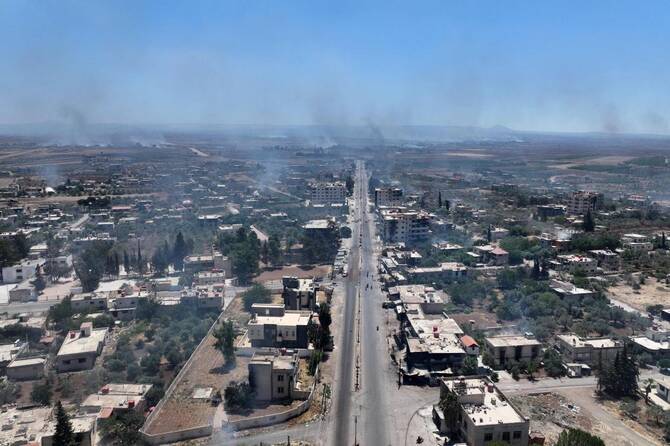Arab News
LONDON: Thousands of families are flocking to Gaza’s beaches this summer as the coastline becomes the territory’s foremost recreational outlet.For the first time in years, most of the Gaza Strip’s coastline is clean enough to swim in, thanks to a concerted sewage cleanup effort.
“We didn’t come for seven years because the water was not safe. Now it looks so much better … The color is different, more blue. This is our second beach day this year,” said Nabila Haniya told the Guardian.
“We have a lot of wars and troubles. The kids deserve to have some fun,” Haniya added.
After 15 years of an Israeli-Egyptian blockade, one of the most pressing issues for 2.2 million people residing in Gaza is access to clean water.
Due to the Israeli restrictions on imports and the lack of proper maintenance, sewage treatment plants were overwhelmed years ago. Almost 97% of the water in Gaza’s sole aquifer is no longer potable, the Guardian report added.
For more than a decade, untreated waste has flowed directly into the sea, causing an environmental disaster and polluting one of the only affordable recreational opportunities in the isolated territory.
However, over the last year, Gaza’s three internationally funded sewage treatment plants have been able to ramp up operations, thanks in part to a more consistent and plentiful supply of electricity.
In October 2021, 180,000 cubic meters of sewage per day were being dumped into the Mediterranean. Today 70% of the sewage is being diverted to modern treatment facilities, with the remaining 30% being partially treated. This means that 95 percent of waste is removed before the water returns to the environmental cycle.
The improvements have reduced sea pollution to its lowest level in years, prompting the local water authority to declare that 65 percent of the coastline is now classified as “green” or “yellow,” indicating that it is safe to swim.
Children run in and out of the waves on the beach in Sheikh Ijlin, a neighborhood in Gaza City’s south, begging their parents for camel rides and candy floss.Seven lifeguards monitoring Sheikh Ijlin’s beach told the Guardian that this summer is the busiest season they can remember.
The clear, blue water is a welcome sight in Gaza, where movement is severely restricted. More than half of the population is unemployed, and the electrical and medical infrastructure has crumbled.
An Israeli ban on the entry of what it considers “dual-use goods,” such as building materials that can be repurposed by Hamas, also poses a continuing threat to Gaza’s clean water supply.
“We need to replace spent pumps in the sewage treatment and desalination facilities, because otherwise, they will overflow. But I can’t just place an order, I have to get approvals and negotiate with Israelis to bring any parts in. By the time I have done that, even more damage has been done,” said Omar Shatat, the deputy executive director of Gaza’s Coastal Municipalities Water Utility, to the Guardian.
“We could rebalance the water cycle in Gaza in five years if it wasn’t for the occupation. As it is, you can’t call anything here sustainable. I try to anticipate what Gaza’s needs will be in five years, 20 years’ time, but it’s impossible,” he added.
Shatat cautioned that the progress made in cleaning up the sea this year is fragile and could easily be lost: “If the electricity supply becomes unreliable again, more sewage will be pumped into the sea. I think the reason things changed is because sewage here became such a huge issue it was starting to affect beaches and desalination plants in Israel too.”






















